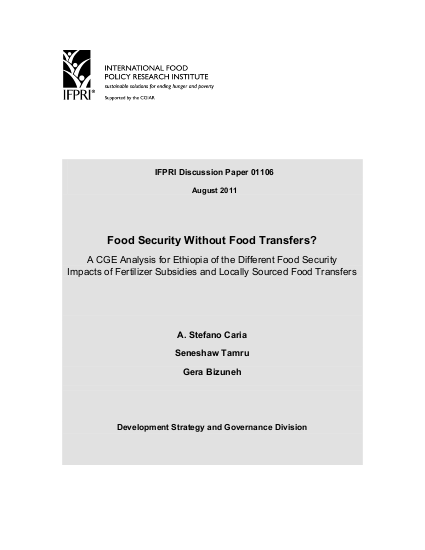
Both availability and access issues underpin Ethiopia’s food security challenges. The country is mostly dependent on drought-exposed, rain fed agriculture, and high transaction costs inhibit trade in staples. Most of the population lives in rural areas where poverty is widespread and livelihoods vulnerable to shocks and poverty traps. This paper looks at different approaches to improve food security in Ethiopia. Specifically, it compares the impacts on the access and availability dimensions of policy-based fertilizer subsidies, targeting yield growth against one of additional food transfers, sourced from local markets. It also explores the possibility of combining the subsidies with a switch to local procurement of current food transfers. It first runs a micro simulation model based on empirically estimated yield functions to quantify the likely effects of additional fertilizer application on national yields, suggesting a rather modest response. It then simulates the policies of interest using the static IFPRI standard CGE model, calibrated for Ethiopia using the 2005/06 social accounting matrix of the Ethiopian Development Research Institute (EDRI). Simulation results point in two directions. First, the food transfer policy is more effective at raising consumption of staples by the targeted rural poor. Second, the moderate yield growth induced by the subsidy shows economic multipliers, stronger effects on domestic supply and welfare gains accruing to all poor through increased factor incomes and decreased staple prices. Yield growth seems a promising avenue to pursue food security and, more generally, poverty reduction goals. Nevertheless, policies focusing on one dimension of the yield function alone, such as fertilizer subsidies, are unlikely to deliver the necessary improvement in yields. Food transfers may still be the most effective short- to mid-term answer to food access insecurity when high return agricultural productivity policies are not available and when internal resources can be used to bear policy costs, avoiding the exchange rate distortions associated with foreign financial assistance.